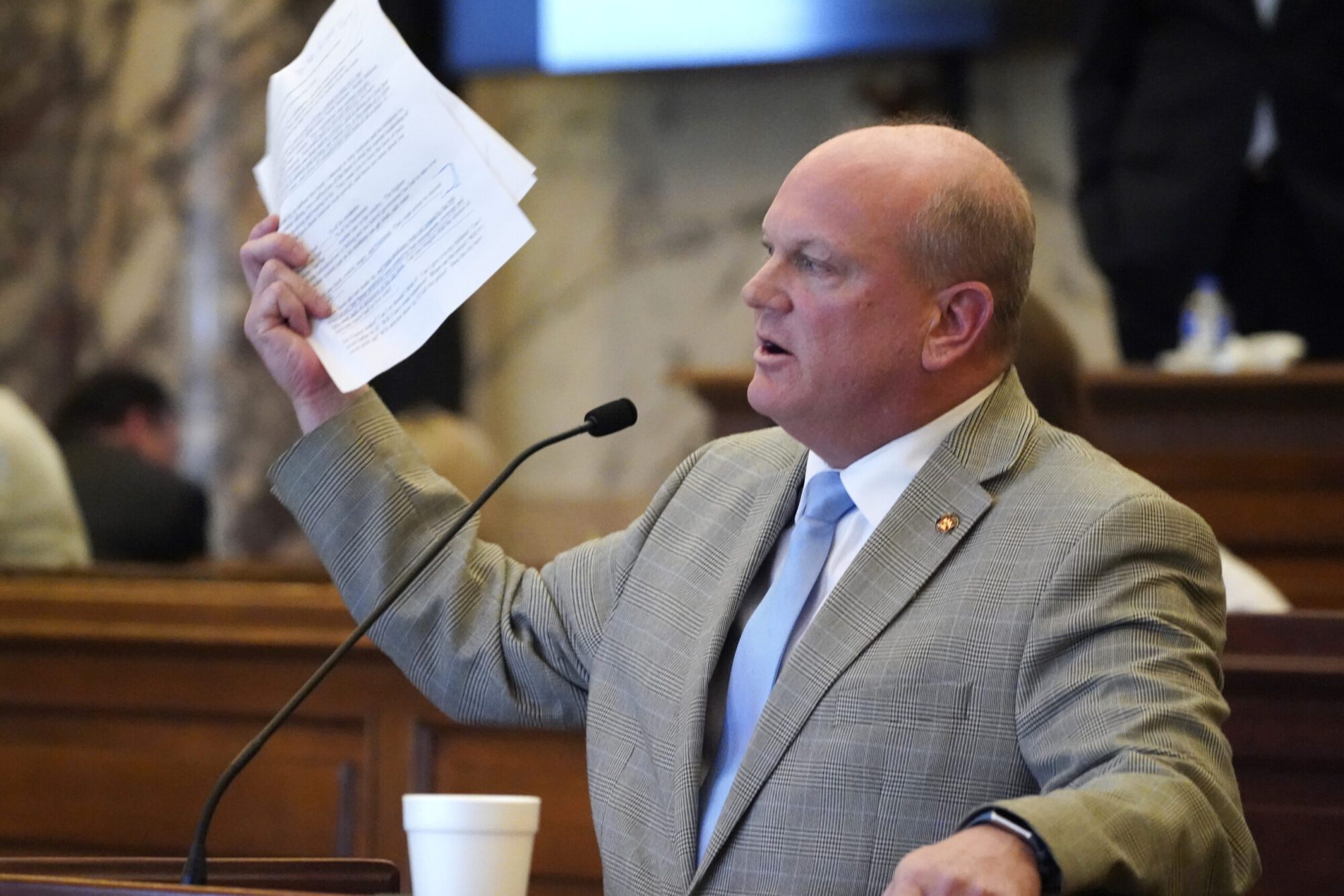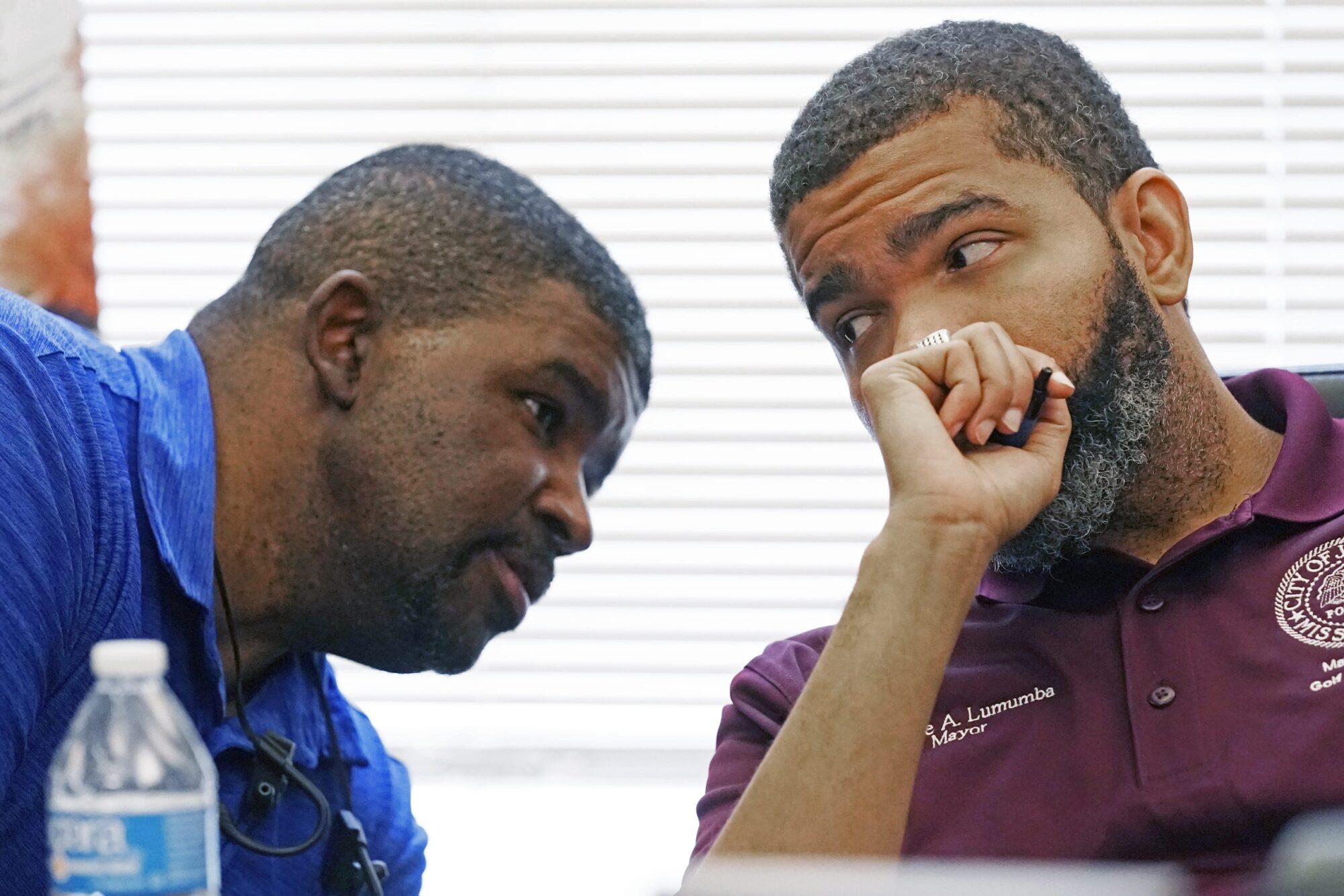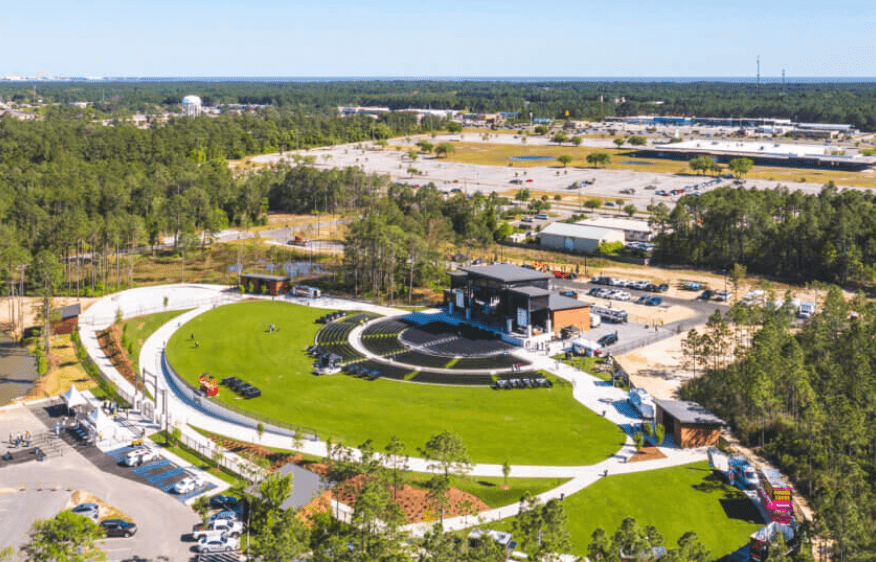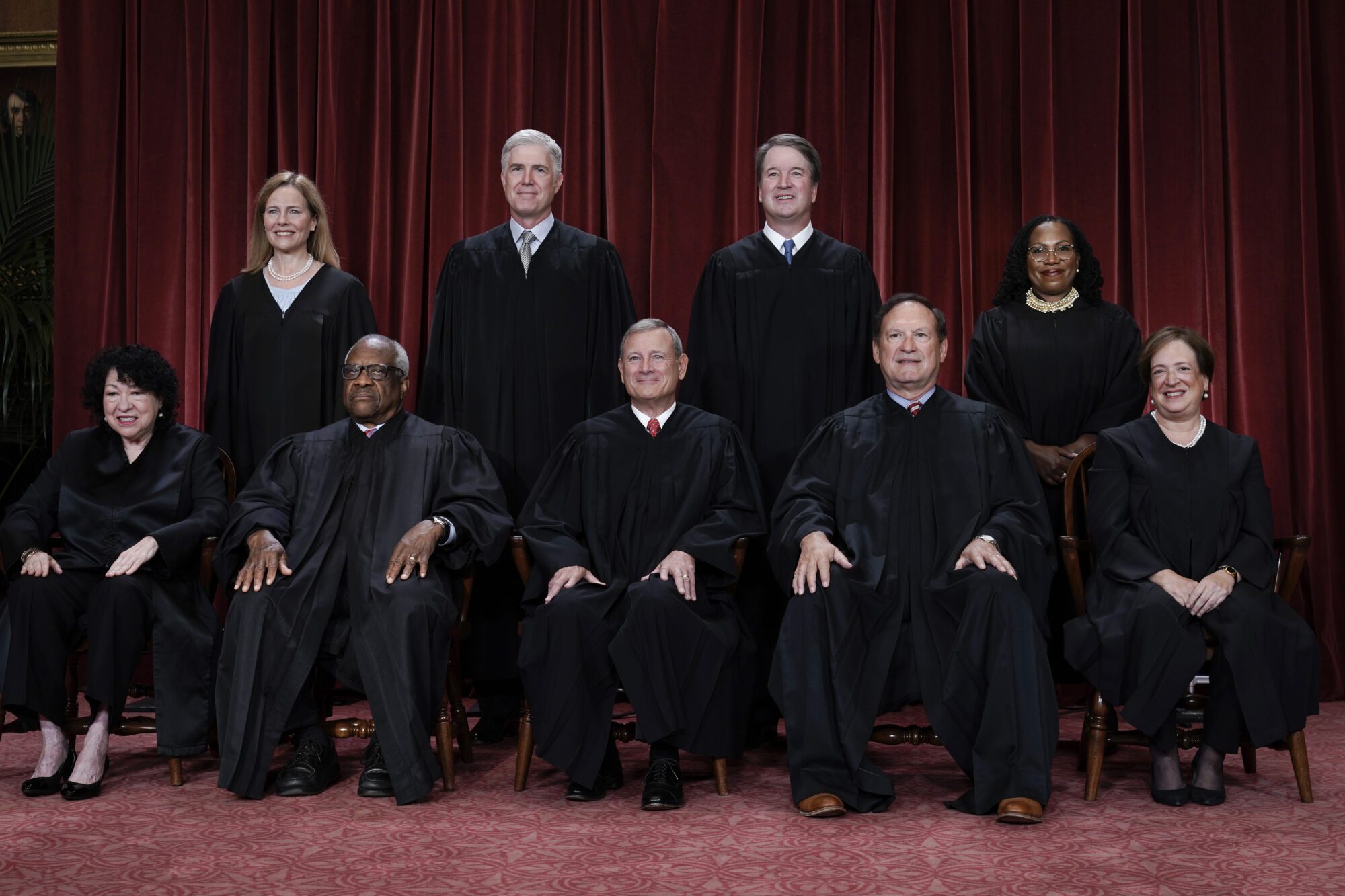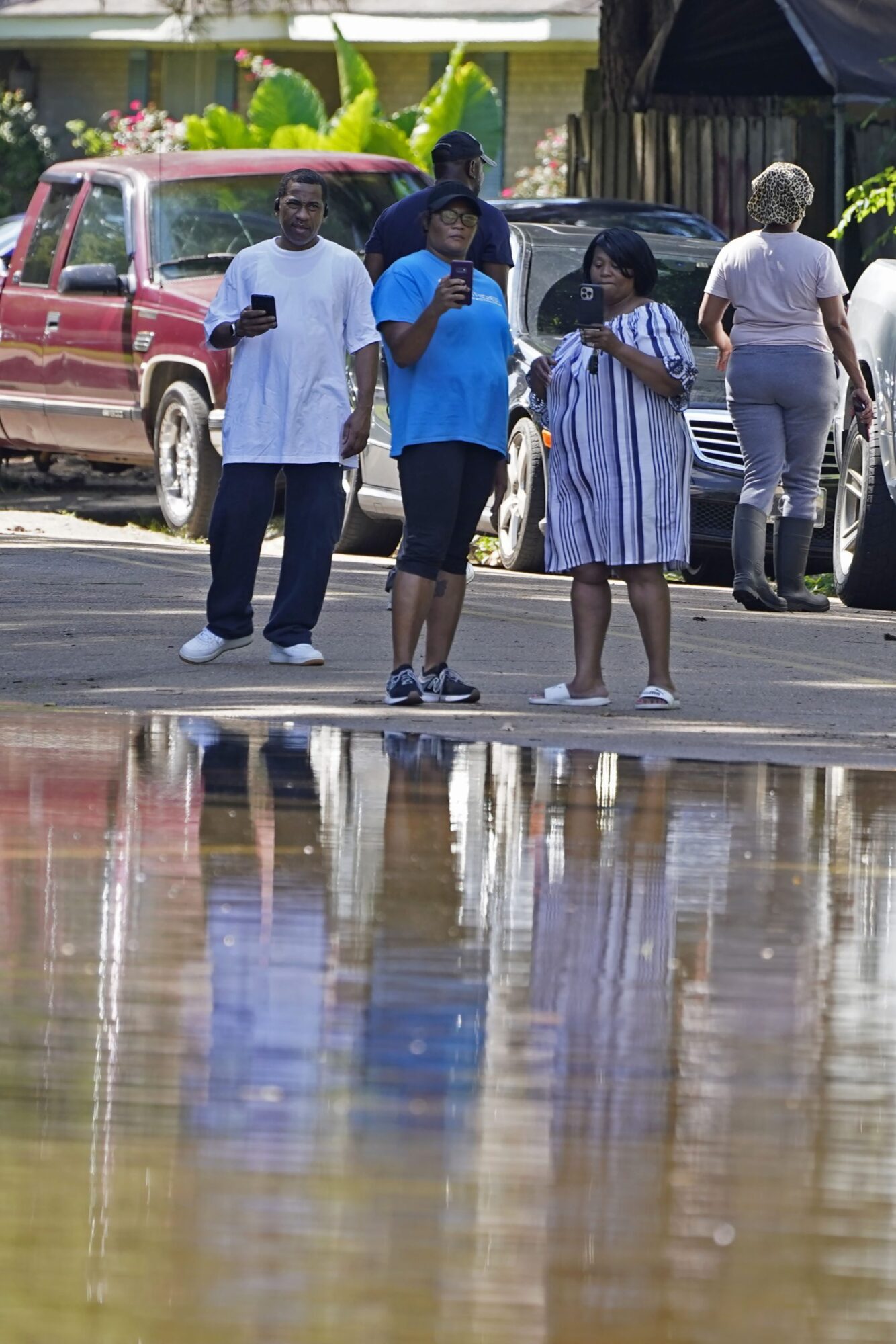
Residents record the rising floodwaters on their cellphones in a northeast Jackson, Miss., neighborhood, Sunday, Aug. 28, 2022, in anticipation of expected severe flooding from heavy rains days earlier in mid-Mississippi. (AP Photo/Rogelio V. Solis)
Even with recent flooding, special interest opposition to the One Lake Project remains.
Mississippi is no stranger to high waters. One of the most remembered floods in the state’s history is the 1979 Easter Flood that left much of Jackson underwater.
Pearl River flooding exacerbated by heavy summer rainfalls in the South have sparked a discussion over the years on how to fix the problem and keep people and property safe.
In 2007, a proposal was brought forward by the Rankin-Hinds Pearl River Flood Control District to aid in the continual flooding threats that take place throughout Jackson and the surrounding metro areas. Many know this proposal as the One Lake Plan. Keith Turner, attorney for the district, calls it the Locally Preferred Plan.
“It’s really not a lake,” said Turner when asked about the proposal. “The plan would keep everything between the levees, taking the existing river just north of Lakeland and widening it between the levees so that the water can flow easier.”
The control district website calls it a “combination of excavating and widening the Pearl River while reinforcing the existing levee system.” It would also include the relocation and improvement of existing weir to a location that is just downstream from I-20.
A draft of the plan, which includes two other alternatives that were brought forward in the 2007 meeting, clarifies why this method of action would be the most beneficial to the Jackson area. That draft has been submitted as a final report with the Army Secretary and the flood district awaits the review from the Army Corps of Engineers.
Turner said they have been working closely with the Army Secretary since March of 2020 to address any concerns the Corps might have regarding the implementation of the plan and potential impacts on the environment or existing structures in the area.
“It’s been mostly minor changes, but there have been improvements. We’ve added more information so that people can understand why this was the decision that we made to move forward with,” said Turner.
Turner says they are hopeful to receive a decision on the final review by the end of the year, but it could still take a minimum of two years to begin work on the project.
Funding for the project largely comes from the federal government which has already authorized, but not appropriated, more than $200 million. Turner says the flood district also plans to ask the state of Mississippi to pitch in with the cost of the levee construction.
The flood district does have bonding authority that can be utilized.
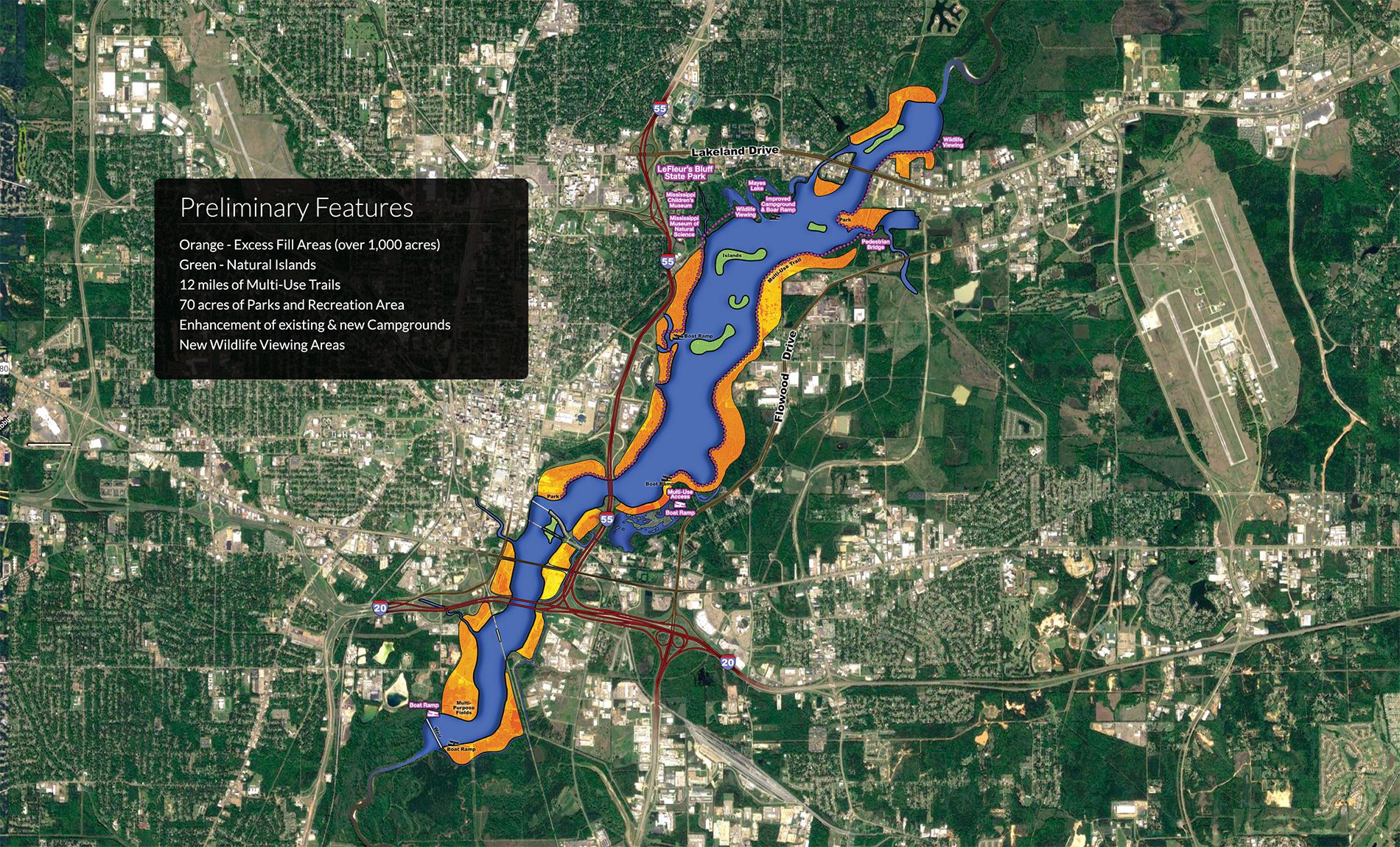
Turner said the EPA will be involved in this final review stage. However, he anticipates they will be largely opposed and comment negatively and aggressively due to the politics associated with it.
While Turner and the flood district believe this is the least environmentally harmful plan to move forward and deal with the constant threat of flooding, not everyone agrees. Environmental groups have lodged steady and constant protests on a variety of grounds.
Andrew Whitehurst with Healthy Gulf says the plan will cause additional environmental issues and is not priced out properly. He said those advocating against the project have questioned the actual cost of the project saying they left out potential highway and infrastructure needs that could be upwards of $100 million.
Whitehurst also brought up a current issue for the Pearl River and urban areas – hazardous waste.
“There are major sewage problems with smaller tributaries and urban runoff. We are already seeing these issues in the Pearl, which has advisories out not to swim or eat the fish,” said Whitehurst. He said those issues would only increase with the widened levees as proposed by the flood district.
Whitehurst said ultimately the flood district must convince the officials at the Pentagon that the National Economic Development (NED) plan backs up Alternative C, which is the One Lake proposal. He said that was not backed by an independent external peer review done by Battelle. In that review it was noted that the 2018 Draft EIS/Study documents did not prove that Alternative C was the most favorable cost/benefit ratio.
Whitehurst’s group, Healthy Gulf and Pearl Riverkeeper, along with local officials and some Louisiana lawmakers have expressed their concern to the Army Secretary as well. Whitehurst and Pearl Riverkeeper’s Abby Braman sent a letter to former Assistant Secretary of the Army R.D. James expressing their concerns and pointing out the issues shown in the peer review.
The two groups have made their opposition to the One Lake project clear. They have signed petitions and advocated against the project’s progression on multiple grounds.
The two groups also advocated for downstream communities of the river, such as St. Tammany and Washington Parishes in Louisiana.
The ultimate goal of the letter was to persuade the Army Secretary that when it comes to the economic justification for the project “there is a need for the sponsors to augment the information they presented on both benefits and costs of Alternative C that involves dredging and further damming the Pearl River.”
“The Rankin Hinds Drainage District has had almost four years to revise its EIS/Study on the Pearl Project, but the Battelle notes underscore that the document they put out for comment in Summer 2018 was a very poorly done document,” said Whitehurst. “They’ve had four years to redeem themselves, and we don’t know what their updated document looks like.”
Turner with the control district recognized the claims made by those opposed to the project but said the data in the report backs up the claim they have made that there will not be any negative impact on those downstream of the Jackson area.
“There won’t be an impact on water quality or quantity,” said Turner.
He went on to say that the district has even added in points to the project that would increase environmental improvement, like a turtle mitigation plan that would help save already dying habitats.
When it comes to the current sewage problem for the river, Turner asked, “Should we not build flood protection for the city because the city is having sewage issues in the Pearl?”
He added that the project is meant for flood protection and while it could have environmental and recreational benefits, that is not the goal.
“The city is in a state of crisis. Everything we can do to help needs to be done. Our project does some of that,” said Turner.
Senator Roger Wicker addressed the One Lake Project this week. He said the project needs to get started soon but that it needs the Army Corps’ final approval to move forward.
“We don’t have to stand for this,” Wicker said.
Jackson Mayor Chokwe Lumumba joined Wicker on a tour of the flooding area.
Repeated flooding along the Pearl River has a major impact on the Jackson metro area. I joined Mayor Lumumba to see the damage and speak to residents who have been affected by the rising waters.
We don’t have to stand for this. pic.twitter.com/B5oFZyNmBa
— Senator Roger Wicker (@SenatorWicker) August 28, 2022



